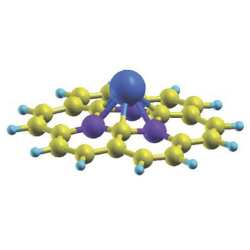Published online by Cambridge University Press: 22 March 2011

Hydrogen is considered by some to be a promising non-CO2-emitting energy carrier for the future. However, to realize a hydrogen economy, there are several technological barriers to overcome. Currently, safe and efficient storage of hydrogen is a bottleneck in the practical usage of hydrogen for fuels. In this article, we present a review on the first-principles computational approach in designing hydrogen storage materials with an emphasis on molecular hydrogen storage in nanostructured materials. Given the limitation of pristine nanostructures for room-temperature hydrogen storage, the strategy of decorating the backbone structure of the nanostructure with transition metal atoms in order to enhance the hydrogen adsorption energy is addressed, and the interplay between the Coulomb interactions and the so-called Kubas interaction (nondissociative weak chemisorption via electron donation and back-donation channels) has been studied. The influence of electron spin on the hydrogen binding energy, problems of metal clustering and oxidation, and the structural instability that may arise during hydrogen sorption are also discussed. We address the limitations and challenges in the development of high-capacity hydrogen storage materials and provide perspectives for how computational materials design can help cope with those problems.